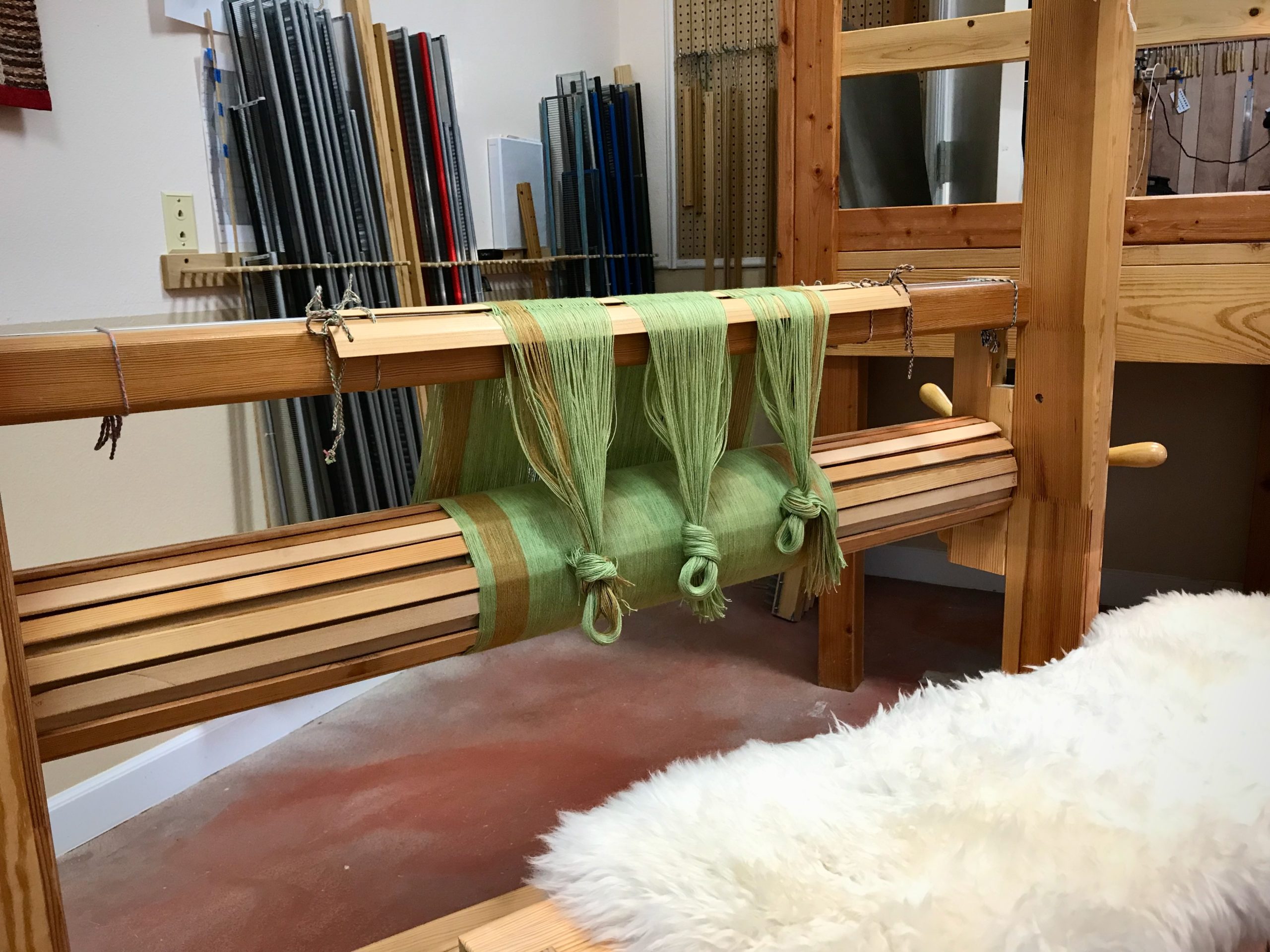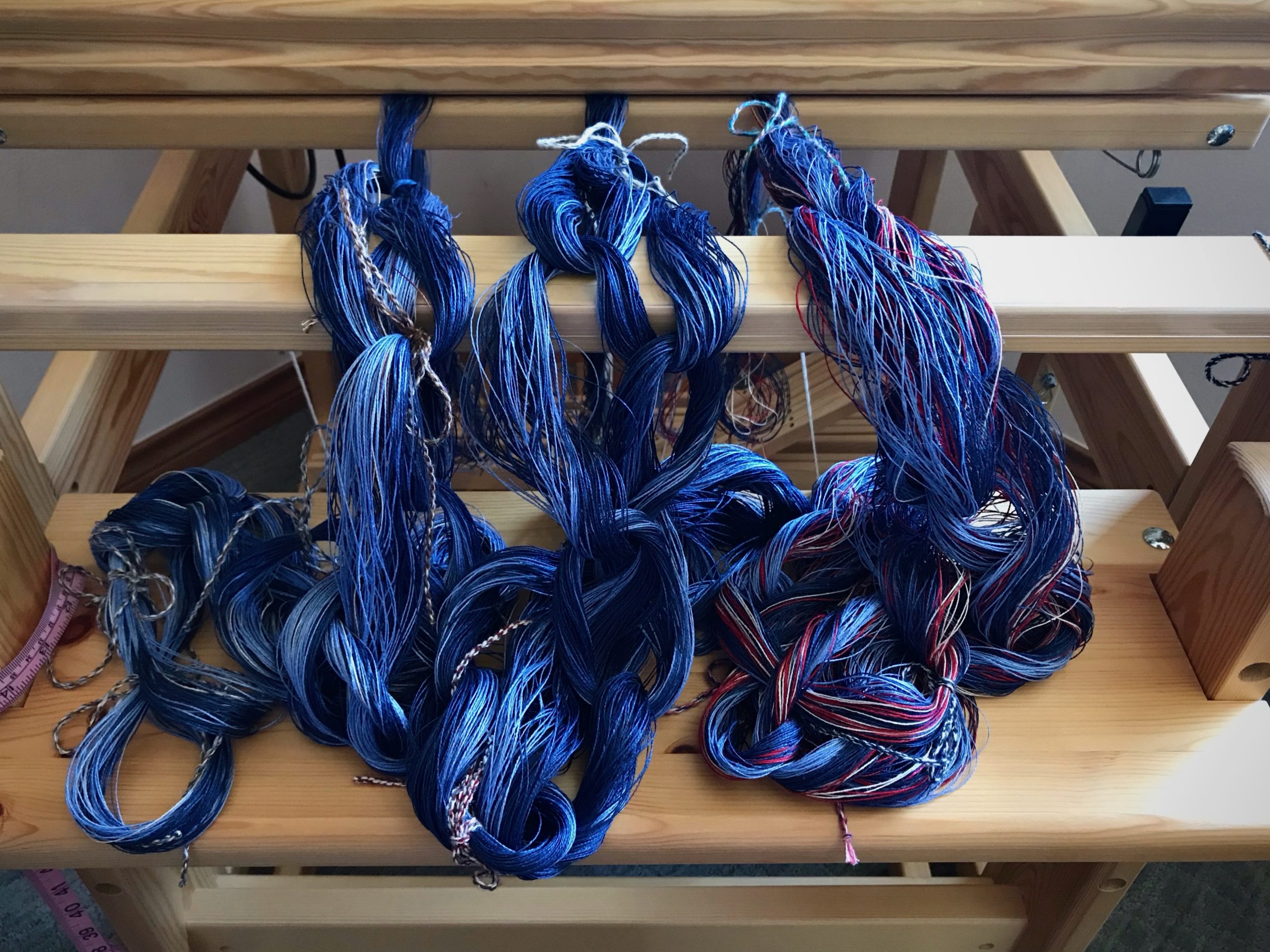I have never woven napkins because napkins that are used get soiled. Why spend time weaving something you have to be so careful about? That is about to change. I am dressing the drawloom for napkins!

The napkins I have in mind are family-friendly napkins for all ages. They will get soiled, of course. They are made with grandchildren in mind–Cottolin warp and linen weft. I have a fun design for each napkin. And we’ll be ready to wipe any messy mouth. Napkins are made to get soiled.

Wisdom is marked by a sense of calm. There is no dread of something ruining the day. If a little (or big) person soils a napkin, so be it. That will just serve to add a bit of history to the cloth. With a little wisdom, I’ll remain undisturbed.
May you listen to wisdom.
Happy weaving,
Karen
















